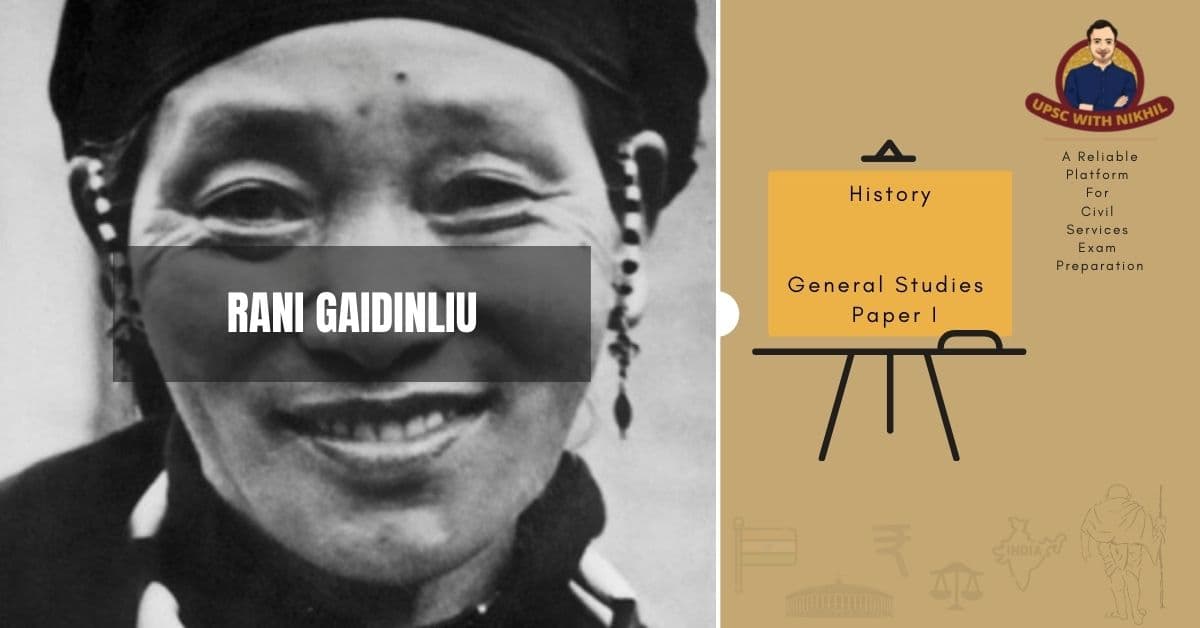Rani Gaidinliu
On February 17, 1993, Rani Gaidinliu, a Naga spiritual and political leader who led an armed rebellion against the British, died in Longkao, Manipur.
FACTS ABOUT HER LIFE
• Gaidinliu was born in Nungkao, Manipur, on January 26, 1915, to Lothonang Pamei and Kachaklenliu. She was a member of the Rongmei tribe, a powerful Naga tribe.
• Gaidinliu did not receive a formal education due to a lack of schools in the area.
• Rani Gaidinliu, or Rani Maa as she was affectionately known, sparked a wave of nationalism among the people of the North East.
• She urged her community to reject British rule and to prevent the oppressive laws from being implemented.
• She rallied people against the British and issued a rallying cry for liberty, declaring, "We are free people, white men should not rule over us..."
• Gaidinliu's umbilical cord was said to have encircled her neck when she was born, and priests predicted that she would grow up to be a remarkable woman.
• Gaidinliu was only 13 years old when her cousin and Guru, Haipou Jadonang, introduced her to the Heraka movement.
• Apart from its religious aspects, the movement aimed to unite people against British atrocities. When Gaidinliu's 'guru' was executed by the British in 1931, it is said that she proved to be a capable'shishya' and took over the leadership of the Heraka movement.

• Gaidinliu was also said to be a gifted speaker who, at such a young age, became an inspirational leader.
• She was also said to have successfully recruited people (including young girls and women) to join her army, and the fought the British in guerrilla warfare.
• The threat she posed was so great that the British reportedly offered a reward of Rs 500 and tax relief for the entire village if anyone could reveal her whereabouts.
• The people, however, remained loyal to Gaidinliu because they admired her.
• The British forces were said to have interrogated every girl named Gaidinliu in the area in a desperate attempt to find her, prompting Gaidinliu to change her name for a time.
• Gaidinliu's growing defiance and popularity were also thought to have alarmed the British, who assigned special battalions to capture her.
• She was said to have been captured from Pulomi village, where she and her supporters were constructing a wooden fortress, after several failed attempts.
• Rani Maa was arrested in 1932 when she was only 16 years old, and was tried and sentenced to life in prison in 1933.
• Only after India gained independence in 1947 was she able to be set free. She was most likely the only female freedom fighter who had been imprisoned for nearly 15 years.
• Rani Gaidinliu was released from prison after India gained independence. She was determined to aid the Zeliangrong in their development.
• She opposed the Naga National Council, which was waging a secessionist campaign. She aspired to create a separate Zeliangrong territory within the Indian Union.
• She also advocated for the Naga tribal religion to be revived. As a result, she was opposed by many Nagas who had converted to Christianity by the 1960s.
• She spent six years in the underground fighting Naga insurgents before coming out in 1966, thanks to an agreement with the Indian government.
• She then began working for a separate Zeliangrong administrative unit through peaceful and democratic means.
• In 1972, she received the Tamrapatra Freedom Fighter Award; in 1982, she received the Padma Bhushan; and in 1983, she received the Vivekananda Seva Award.
• She returned to her hometown in 1991 and died in 1993 at the age of 78. She received the Birsa Munda award after her death.
• Her bravery, sacrifice, and patriotism, however, cannot be questioned, as she led the fight for independence from foreign rule when she was only thirteen years old.


